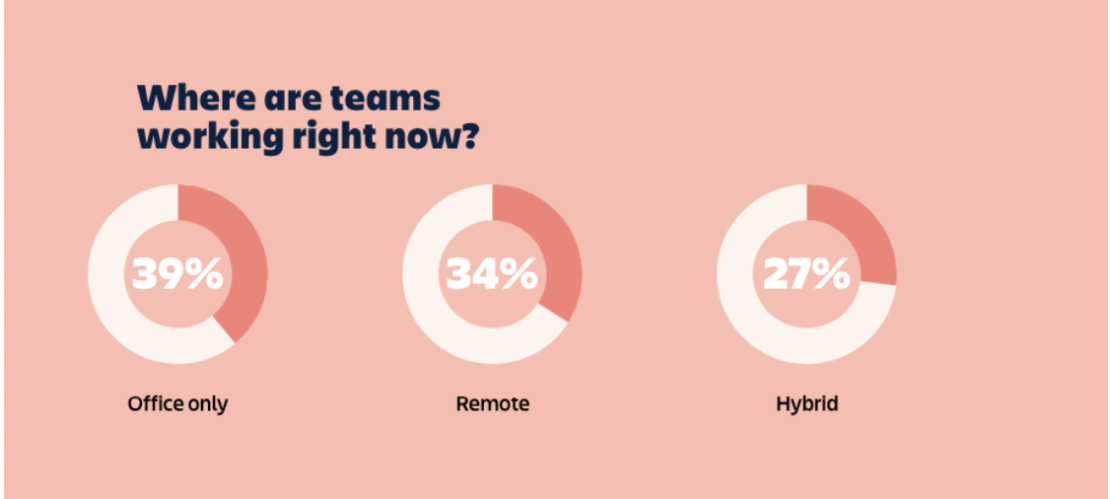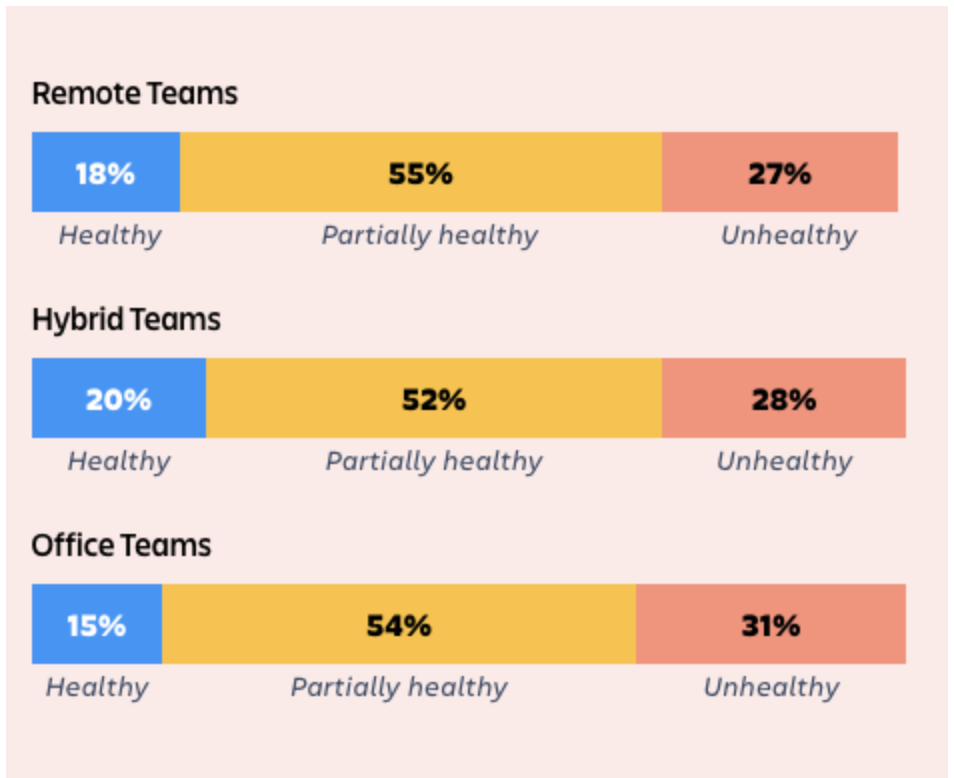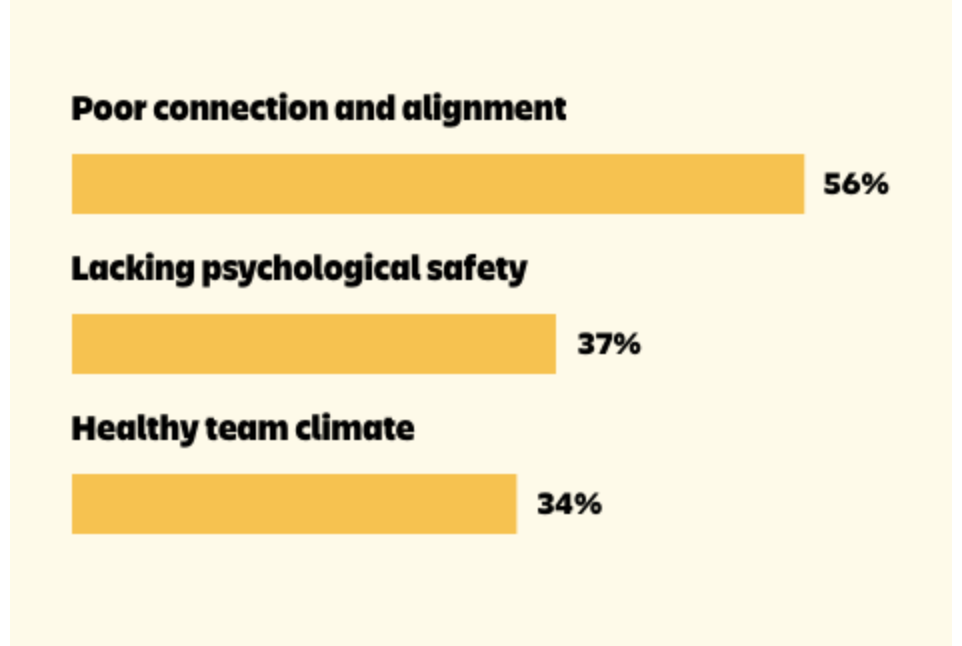
For some time, I’ve been looking for one “source” that curates modern takes on HR Tech, perspectives from the people who build it, and its impact on enterprise — something that’s tailor-made by professionals for decision-makers.
I never found it — so I decided to build it.
Every week, I’ll be sharing fresh insights on tech platforms, design, data, and the future of work — straight to your inbox.
My Thoughts
Of all the reports, recaps, and state of the unions we’ve seen in 2022, my favorite by far is Okta’s new Businesses at Work report. Every year, the software company releases a comprehensive view of how companies are using and interacting with the vast ecosystem of applications. 🌳 🌲 💻 🌳 🌳
One trend, and one trend alone, transcended every continent, industry, and purpose detailed in this year’s 50 page report: Digital Transformation. ✨ 🖥️ ✨ Over the past year, organizations have not just adopted technology — they’ve embraced it. Collaboration tools took the gold for most popular type of application. They also accounted for five of the top ten fastest-growing applications, a clear indicator that distributed teams and remote workforces are here to stay.
Furthermore, Okta identified multiple instances of software stack adoption. The app-tly 😄 named “Best-of-breed” trend is proof that businesses are prioritizing agility over legacy strategies, choosing to put resources towards building a suite of tools that cater to their specific organizational needs, automate workflows, improve efficiency, and promise long-term ROI. We’ve reached the end of a very long legacy for legacy-based solutions. 🪦
I’m not going to spoil the full report because I think every leader — HR, IT, and otherwise — should take the time to read it through and use these impressive insights to drive digital transformation efforts in their organizations this year. Check it out here. 👈🏻
Market Moves
Last week marked the one-year anniversary of GameStop’s rise to power 🕹️ 👑 after a group of people on Reddit took aim at Wall Street by disrupting a hedge fund’s attempt to short the video game retailer’s stock. The move drove up prices, resulting in the loss of millions of dollars for investors.
The event sparked controversy from every corner including Wall Street bigwigs, the common people, the SEC, and even the House Committee for Financial Services. At the center of it all was a single app: Robinhood. The company chose its namesake to represent its vision of accessible stock market trading.
One year following the unprecedented rocket to the moon 🌕, Robinhood is still in hot water. The company announced this week that it had lost $3.69 billion in 2021, with $423 million lost in Q4 alone. 💀 To add insult to injury, the company’s stock price hit an all time low last Friday — prompting some members of the WallStreetBets Reddit forum to take out short sell bets against the stock. 💀 💀 💀 Robinhood is also in (and losing) arbitration sessions with users who were unable to trade GME stock during the height of the GameStop 🎮 frenzy, and gearing up to fight a class action lawsuit in Florida.
Now, the company looking to help people make their own market moves 😏 is facing an uncertain future. Not only has the entire market for app-based trading come under scrutiny by the SEC following the chaos of “memestocks,” but rumors now abound of a takeover. Specifically, finance Goliath JPMorgan Chase, whose CEO Jamie Dimon has openly discussed plans to invest $12 billion to expand the company’s fintech presence, has been named as a potential conqueror of this once-revered David of day trading.

Tech Innovation at Work
We talk frequently about the importance of data-driven decision making, but there’s a lot left to be said for how that data is dispersed and who has access to it for decision making. Which is the perfect lead-in to a piece that caught my eye this week: an HBR and ThoughtSpot report on the modern necessity of self-service analytics. 🧑🦰 💻 If you’re unfamiliar, Gartner’s handy IT Glossary defines self-service analytics as, “a form of business intelligence (BI) in which line-of-business professionals are enabled and encouraged to perform queries and generate reports on their own, with nominal IT support.” HBR’s report goes on to elaborate that self-service analytics are built on simple search queries, natural language processing, and data visualization 📊 to make them accessible to nontechnical users with varying levels of data competency. Now that I mention it, it’s probably obvious that the challenges of leadership disconnect extend to data being siloed within the C-Suite level. But empowering frontline workers to access, query, and act on data isn’t just a competitive edge — it’s an essential skill set for modern organizational agility. 🐆
You’ve heard of edutainment, the only way we’re willing to learn new things in the attention economy. Now get ready for “retailtainment” — the emerging e-commerce trend that brings entertainment and content to the virtual retail experience. 🛍️ 🤳 Today, China is considered the biggest market for retailtainment endeavors, but the US is swiftly catching up. Protocol recently gathered some of the great minds of eCommerce and thought leadership organizations like Poshmark and McKinsey to discuss what the new frontier of online selling may look like in the US. Here are the highlights:
- Experience first, sales second: Retailers are prioritizing experience and branding, with sales taking a backseat. Or as Lucidworks’ Will Hayes describes it, sales are now considered a “happy accident.” Tangentially, social interaction with other shoppers and influencers is reaping positive reward as people bring their interaction for authentic connection into the digital world. 🌐
- Socially responsible shopping is trending: Social responsibility is front of mind for consumers, which will push organizations to pivot strategies towards aligning their brands with specific causes. 🌳
- Drip is going digital: That is to say: fashion and luxury goods have already crossed over into the metaverse. 👟
Read the full article here.
The Changing Workplace

Atlassian delivered some great content on remote team culture, including some thoughtful suggestions for identifying remote team disconnect and finding ways to encourage workers to engage authentically (something we did organically in a physical office). Being authentic doesn’t just mean admitting to your coworkers that you’ve been wearing the same sweatpants for a week.👖 Authentic connections within teams include open discussions about individual work, learning style, roles, and how well aligned team members feel with others. That last one, according to Atlassian’s State of Teams report, is one of the biggest issues facing hybrid or remote teams. Check out the Atlassian’s My User Manual, 📙 which is designed to help workers communicate their professional needs with members of their team. Once those are done, though, you should also add some time for casual chit chat, showing off pets, sharing weekend plans, etc. 🐈
If you’re struggling with team culture or authentic engagement, Atlassian also offers some great, fresh ideas for bonding asynchronously. When it comes to international teams, celebrating happy hour without part of the team engaging in some on-the-job day drinking can be a challenge. So finding ways to keep teams close when spread across multiple continents is key. Here are some of my favorite ideas:
- Messy Desk Thursdays: I love it. Casual, funny, and a great conversation starter. Just make sure you double check there’s nothing embarrassing in the background.
- .gif battles: If your team is on Slack, this may not be new to you, but you could always up the ante with a little competition.
- Collaborative playlists: one of Spotify’s most recent features is the ability to create collaborative playlists. Choose a theme and watch your team bond over the universal language of music.
- Kahoot: Because who doesn’t love Kahoot?
Finally, here’s the last in a five part series from Workday profiling leading HR figures. This week, Workday chats with organizational psychologist Adam Grant. Get thoughts on leading through unexpected circumstances, scheduling in organic bonding time, and more.
All About Data
As I mentioned above, Atlassian released its annual State of Teams report this week, this time focusing on team health in remote organizations. Here are the highlights:

For the purpose of the study, teams were placed into one of three categories based on responses to questions related to standard demographics as well as variables including organizational culture and team health KPIs. Here’s how the teams measured up:

Of the teams that fell into the unhealthy range, the leading issues were:

Editor’s Picks
- Microsoft marches towards its “One Outlook” rollout
- An employee responds to an in-office work policy by bringing his cabin with him
- HBR’s says to think of the Great Resignation as the “Great Disconnection”
- Walt Disney’s grandchildren are fighting for better pay for park cast members
- Salesforce has appointed Lori Castillo Martinez as Executive Vice President and Chief Equality Officer
- Is the Great Resignation contagious?
Click here to subscribe to Exit Interview, a weekly email about tech platforms, design, data, and the future of work — straight to your inbox.

